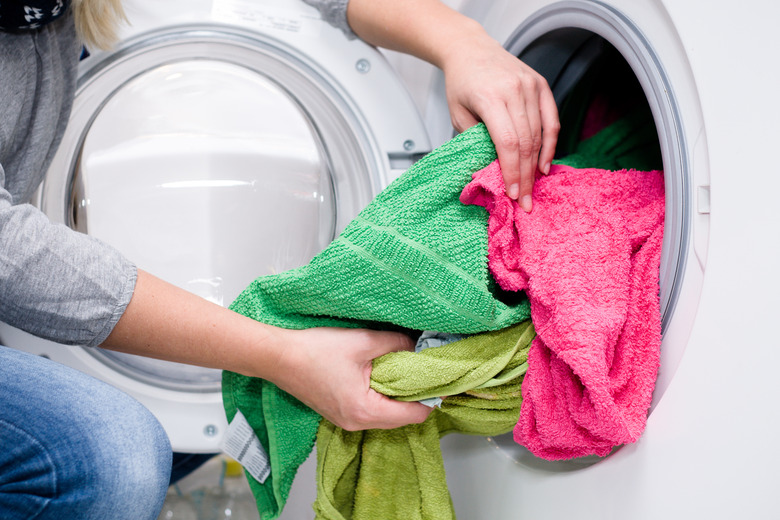How To Use A Front-Loading Washing Machine
If you've spent any time in Europe or Asia, you've probably noticed that top loading washers are few and far between. Front-load washing machines are the standard abroad, although you'll see more top-loaders in homes in this country. These machines have a lot of advantages over top-loaders but take a little getting used to.
Top-Load Versus Front-Load Washing Machines
Top-Load Versus Front-Load Washing Machines
While most U.S. households with washers have top-load machines, front-load machines are the washers of choice in commercial facilities. That's because there are significant advantages to using front loaders, starting from a lower water bill. The average front loader uses some 13 gallons of water to wash a load versus double that amount for a top loader. That's increasingly a sales point for homes in the United States too, as consumers try to reduce water usage in response to drought.
And front-load washer reviews also note that these machines get clothes drier since they spin faster. That means that less dryer time is required, reducing electricity use, too.
Front-Load Washer Detergent
Front-Load Washer Detergent
People using a front-load washer for the first time may be confused about how to use this type of machine. First of all, don't worry about the water splashing out. Once you load the clothes and turn on the machine, a little water drips in from below the level of the door. The machine spins, the clothes inside absorb the water, and the machine automatically adds more water to maintain the correct level. Some machines allow you to set the water level yourself.
In terms of front-load washer detergent, you'll use a lot less than with the top loader. This makes sense since you use less water. Your machine will likely have a drawer where you put detergent, water softener and bleach, or you may have to put the products into the machine yourself before you add clothing. Use a detergent specially formulated for a high efficiency machine, often labeled "HE" and measure the recommended dose precisely.
If your machine requires you to add the detergent every load, the required amount will not be more than two tablespoons of HE detergent. If you want to use a single dose detergent pack, put this in the bottom of the machine before you add the clothes. Yes, you'll also be using less fabric softener (about one teaspoon per load) and bleach, too (no more than two tablespoons per load).
Adding Clothes to a Front-Load Washer
Adding Clothes to a Front-Load Washer
While the action on a front-load washer is less aggressive than in a top load, you still want to prepare your clothes carefully before you put them in. Remove all items from pockets, zip up zippers and close buttons.
Load a front-load washer according to bulk, not weight. Put in both large and small items to balance a load, but stop loading when the drum is loosely full. Do not overfill a front-load machine since your clothes won't get cleaned well. Try piling dirty clothes high in the machine, but don't cram them in.
Keeping Down Smells
Keeping Down Smells
Some people find that their machine works efficiently but starts to smell after a time. You can avoid this with attention to maintenance. When you are not using the machine, keep the door and the detergent drawer open to allow them to air, preventing mold and mildew. You should also follow manufacturer instructions about running the machine cleaning cycle frequently. Even if you like cold-water washes, you should also run a hot water wash every now and then just to clear out soap.
